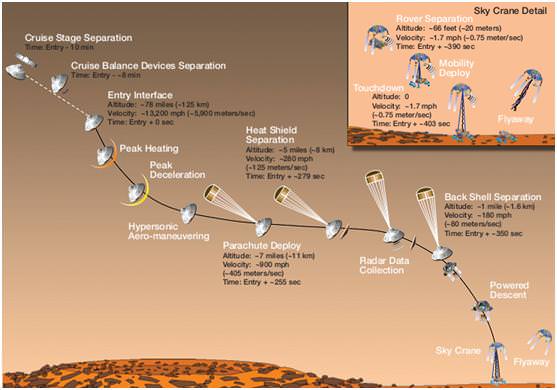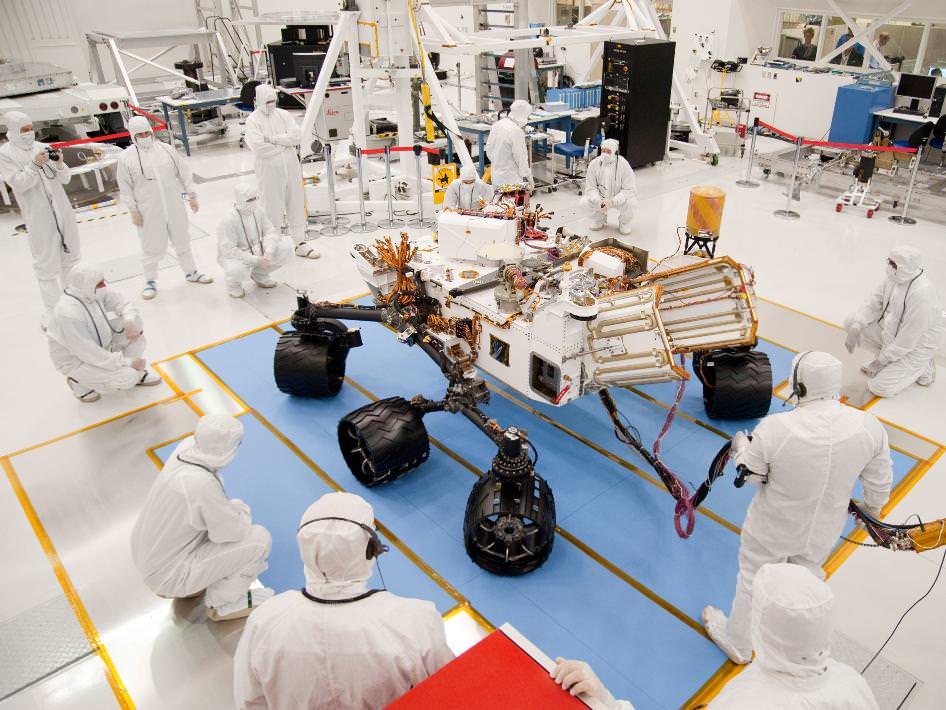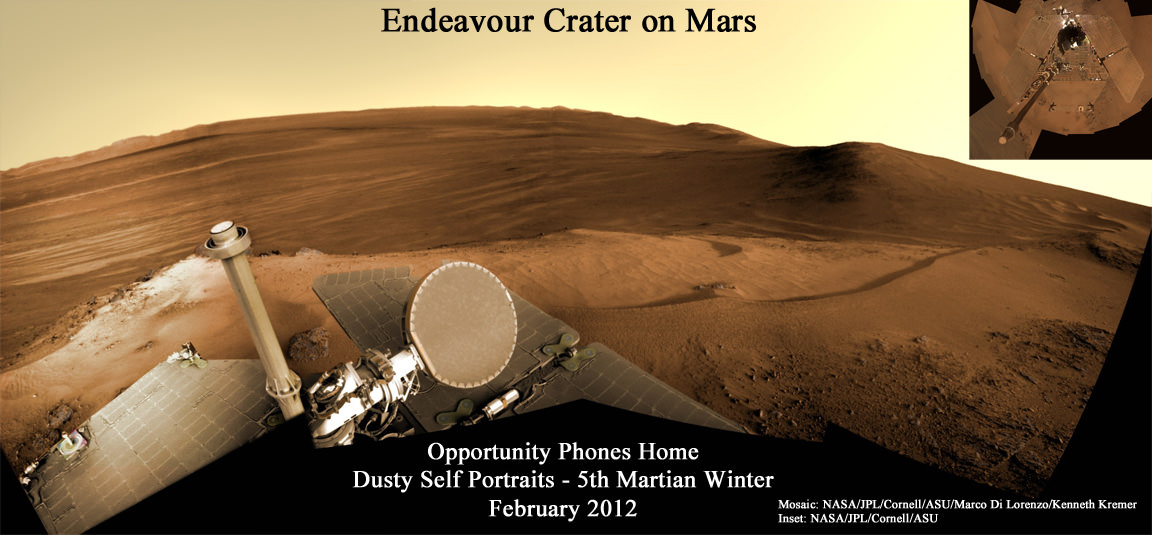NASA Holding Big Events for Curiosity Rover Landing; Register for Chance to Attend
It’s a big rover, so nothing but a big event is appropriate. NASA is going to hold the first-ever multi-center “Social” (formerly known as Tweetups) in conjunction with the landing of the Mars Science Laboratory’s Curiosity rover on Aug. 6 EDT (Aug. 5 PDT). In case you’re not familiar, NASA Socials are in-person meetings with people who engage with the agency through Twitter, Facebook, Google+ and other social networks.
You can register to attend events at one of six NASA centers: Ames Research Center in Moffett Field, Calif.; Glenn Research Center in Cleveland; Goddard Space Flight Center in Greenbelt, Md.; Johnson Space Center in Houston; Langley Research Center in Hampton, Va.; and Jet Propulsion Laboratory (JPL) in Pasadena, Calif. JPL will be having the main event, and each of the other centers will be connected via a multi-center NASA Television simulcast with JPL, home of the Curiosity rover.
If you live close to any of these centers or are willing to travel, and are at all even remotely interested in space exploration, you should register for the chance to attend. Tweetups NASA Socials are incredible events (some attendees have called them life-altering) where you get behind-the-scenes looks at the centers, tours that aren’t normally given to the public, and presentations by scientists, engineers and managers. The events also will provide guests the opportunity to interact with fellow social media users, space enthusiasts and members of NASA’s social media team. Participants will learn about the Mars Science Laboratory mission and their respective NASA field center. They are encouraged to share their experience with others through their favorite social networks.
Registration for the five new NASA Socials opens at noon EDT, Friday, June 29, and closes at noon Tuesday, July 3. NASA randomly will select participants from online registrations. People may register for NASA Socials to be held at multiple locations, but selectees will be chosen for one event only. Each field center’s social and number of guests allowed varies. For more information on each center’s activities and rules pertaining to NASA Social registration, visit:
http://www.nasa.gov/social
Curiosity is currently scheduled to land at Mars’ Gale crater at approximately 1:31 a.m. EDT Aug. 6 (10:31 p.m. PDT Aug. 5), so be prepared to stay up late! But it should be worth it.
During the two-year prime mission, the rover will investigate whether the selected area of Mars offered environmental conditions favorable for microbial life or if evidence of it existed. Find out more about MSL at this website: http://www.nasa.gov/msl
Curiosity and the Issue of Planetary Protection
Curiosity at Centre of Attention During Testing Image Credit: NASA /JPL – Caltech
There have been many reports about the possibility of NASA’s Curiosity rover contaminating Mars with microbes from Earth once it lands on the Red Planet in August. The wheels, the landing procedure and the drill bits have all come under scrutiny. But what are the concerns and what safeguards are there to prevent contamination from this or other missions?
In 1967 the United Nations drew up the ‘Treaty on Principles Governing the Activities of States in the Exploration and Use of Outer Space, Including the Moon and Other Bodies.’ All countries which sign up to the treaty “shall pursue studies of outer space, including the moon and other celestial bodies, and conduct exploration of them so as to avoid their harmful contamination.” Every mission is given a category (I,II,III,IV or V) depending on whether it is a flyby, orbiter, lander, or Earth return mission, whether its destination is a planet, moon, comet, or asteroid and whether the destination could provide clues about life or have the potential to support Earth life. So for instance Cassini is a catagory II mission, Curiosity is classed as a IVc mission.
Every stage of a mission is carefully monitored. From construction in a sterile clean room with laminar-air-flow systems, pressurized microbial barriers and personnel wearing hoods, masks, surgical gloves, booties and protective suits called bunny suits. Components and entire spacecraft are sterilized using dry heat microbial reduction, by being enclosed in a bioshield (like a large casserole dish) and baked them in an oven at 111.7 degrees Celsius for 30 hours. For more sensitive components a low-temperature process is used. Components are placed in a vacuum and hydrogen peroxide is injected into the sterilization chamber to establish a specified vapor concentration. Thousands of samples are taken at every stage of construction and tested for spore-forming organisms, for example the Viking mission in 1975 tested more than 6000 samples in total.
Three issues have arisen with the Curiosity rover. During the landing procedure a parachute and thrusters will slow the descent before the ‘sky crane’ lowers the rover, its wheels making direct contact with the surface. Previous rovers have waited on landing platforms for days before their wheels made contact with the surface and in tests it has been shown that even a few hours exposure to Martian levels of ultraviolet can kill between 81 and 96 per cent of bacteria that may be present. So once Curiosity lands it will probably need to remain stationary for some days to minimize the risk of contamination from its wheels.
Another issue arose last year, after launch, when it was realized that a step in the planetary protection measures wasn’t adhered to during the manufacture of the rover’s drill bits. These were meant to arrive at Mars inside a sterile box, but the box was opened and the bits tested for contamination and one of the bits was attached to the drill head. This procedure strayed from earlier agreed-to protocols. The drills have now become another cause concern as it has been found that Teflon and molybdenum disulfide from seals within the drill assembly could rub off and mix in to contaminate samples excavated during operation, making the samples more difficult to analyze. The MSL team are looking at ways to work around the problem, these could include running the drill on a slower, less percussive setting or dispensing with the drill altogether and relying on Curiosity’s scoop to take soils soil samples and using the rover’s wheels to roll over and break open rocks.
This all serves to highlight the importance of the planetary protection treaty to ensure we do everything possible to reduce the risk of contaminating other worlds and of compromising any data we return.
Find out more at NASA’s Office of Planetary Protection
Engineers Able to Narrow Landing Ellipse for Curiosity Rover
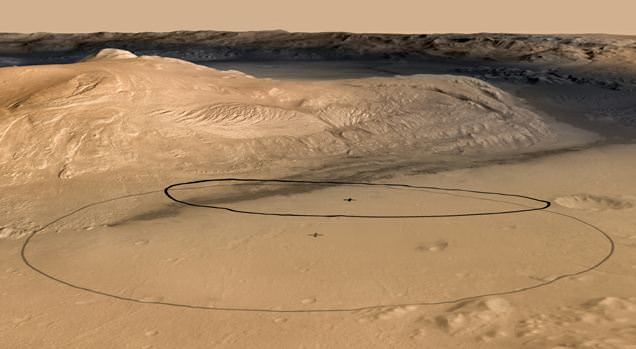
[/caption]
Engineers for the Mars Science Laboratory Curiosity rover have now zeroed in to a more precise landing ellipse, now aiming for a landing spot that is closer to where the scientists ultimately want to be, the foot of Mount Sharp in the center of Gale Crater. It was possible to adjust landing plans because of increased confidence in precision landing technology.
“We’re trimming the distance we’ll have to drive after landing by almost half,” said Pete Theisinger, Mars Science Laboratory project manager at NASA’s Jet Propulsion Laboratory. “That could get us to the mountain months earlier.”
The layers of rock and sediments located in the mountain are the prime location for research with the rover.
Curiosity is scheduled to land at approximately 10:31 p.m. PDT Aug. 5 (1:31 a.m. EDT, Aug. 6). Following checkout operations, Curiosity will begin a two-year study of whether the landing vicinity ever offered an environment favorable for microbial life.
Theisinger and other mission leaders described the target adjustment during an update to reporters on Monday, June 11, about preparations for landing and for operating Curiosity on Mars.

The landing target ellipse had been approximately 20 kilometers wide by 25 kilometers long (12 miles wide and 16 miles long). Continuing analysis of the new landing system’s capabilities has allowed mission planners to shrink the area to approximately 7 by 20 kilometers (4 by 12 miles), assuming winds and other atmospheric conditions are as predicted.
Even with the smaller ellipse, Curiosity will be able to touch down at a safe distance from steep slopes at the edge of Mount Sharp.
“We have been preparing for years for a successful landing by Curiosity, and all signs are good,” said Dave Lavery, Mars Science Laboratory program executive at NASA. “However, landing on Mars always carries risks, so success is not guaranteed. Once on the ground we’ll proceed carefully. We have plenty of time since Curiosity is not as life-limited as the approximate 90-day missions like NASA’s Mars Exploration Rovers and the Phoenix lander.”
Since the spacecraft was launched in November 2011, engineers have continued testing and improving its landing software. Mars Science Laboratory will use an upgraded version of flight software installed on its computers during the past two weeks. Additional upgrades for Mars surface operations will be sent to the rover about a week after landing.
Other preparations include upgrades to the rover’s software and understanding effects of debris coming from the drill the rover will use to collect samples from rocks on Mars. Experiments at JPL indicate that Teflon from the drill could mix with the powdered samples. Testing will continue past landing with copies of the drill. The rover will deliver the samples to onboard instruments that can identify mineral and chemical ingredients.
“The material from the drill could complicate, but will not prevent analysis of carbon content in rocks by one of the rover’s 10 instruments. There are workarounds,” said John Grotzinger, the mission’s project scientist at the California Institute of Technology in Pasadena. “Organic carbon compounds in an environment are one prerequisite for life. We know meteorites deliver non-biological organic carbon to Mars, but not whether it persists near the surface. We will be checking for that and for other chemical and mineral clues about habitability.”
source: JPL
Vote for the Curiosity Rover to Become a LEGO Toy
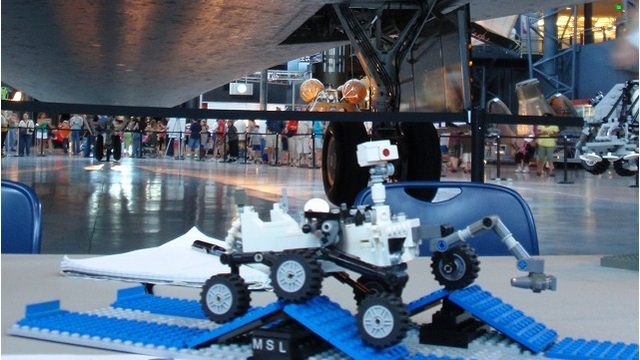
[/caption]
I know a lot of our readers are — like me — huge LEGO fans, and of course, we have lots of fans of the Mars Science Laboratory, a.k.a the Curiosity rover. One of our readers, Allen Eyler, just sent me an email on how disappointed he and many other rover fans are about the fact that LEGO has no plans to create a Curiosity toy model. However, LEGO has a website where users can submit prototype designs for LEGO projects and if 10,000 people vote for the design, then LEGO will consider mass-producing and marketing that design. Bring in Stephen Pakbaz, an engineer at JPL who was involved in some of the design and testing of the real Curiosity rover. He has now designed and built an amazing Curiosity rover in LEGO, at 1:20 scale. It features the same ‘rocker-bogie’ wheel action just like the real Curiosity rover, along with an articulating arm and a deployable mast.
It looks awesome and I’m already wanting to play with it! And just think of the great outreach for NASA and space exploration it would be to have a Lego Curiosity rover for sale in stores. We now just need our readers to help boost the votes for Curiosity as a LEGO toy model.
All you need to do is visit LEGO’s CUUSOO page for the Curiosity rover and cast your vote. You can see more images of the rover there, or at Stephen Pakbaz’s Flickr page, where there is even a video that shows how the rocker-bogie system works.
Let’s do this!
Curiosity is now on its way to Mars and is set for an exciting landing on August 6. Watch below the incredible, nail-biting video of how it is going to happen:
Curiosity Halfway to Red Planet Touchdown
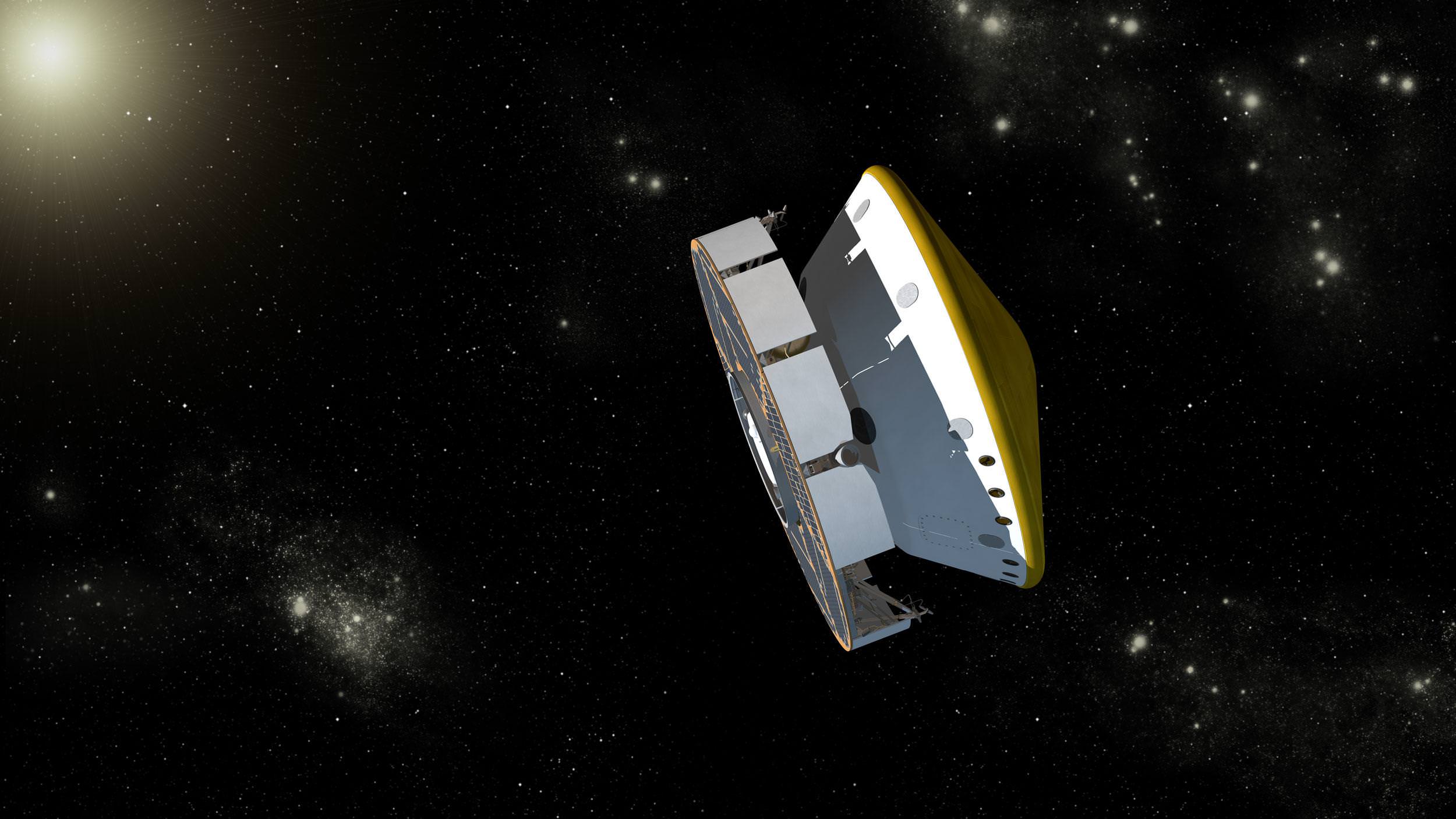
[/caption]
As of today, NASA’s car sized Curiosity rover has reached the halfway point in her 352 million mile (567 million km) journey to Mars – No fooling on April 1, 2012.
It’s T Minus 126 days until Curiosity smashes into the Martian atmosphere to brave the hellish “6 Minutes of Terror” – and, if all goes well, touch down inside Gale Crater at the foothills of a Martian mountain taller than the tallest in the continental United States – namely Mount Rainier.
Curiosity will search for the ingredients of life in the form of organic molecules – the carbon based molecules which are the building blocks of life as we know it. The one-ton behemoth is packed to the gills with 10 state of the art science instruments including a 7 foot long robotic arm, scoop, drill and laser rock zapper.
The Curiosity Mars Science laboratory (MSL) rover was launched from sunny Florida on Nov. 26, 2011 atop a powerful Atlas V rocket for an 8.5 month interplanetary cruise from the Earth to Mars and is on course to land on the Red Planet early in the morning of Aug. 6, 2012 EDT and Universal Time (or Aug. 5 PDT).
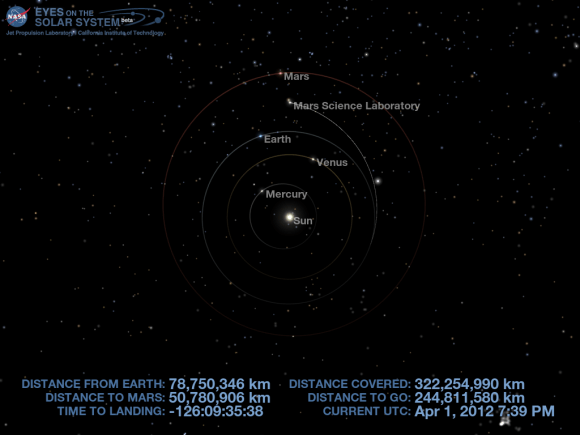
This roadmap shows Curiosity's flight path through the Solar System - From Earth to Mars during the 8.5 month interplanetary cruise. Credit: NASA/JPL-Caltech
On March 26, engineers at NASA’s Jet Propulsion Laboratory, Pasadena, Calif., successfully ignited the spacecrafts thrusters for the second of six planned trajectory correction maneuvers (TCM’s) to adjust the robot’s flight path during the long journey to achieve a pinpoint landing beside the Martian mountain.
“It is satisfying to get the second maneuver under our belts and know we are headed in the right direction,” said JPL’s Erisa Hines, systems lead for the maneuver. “The cruise system continues to perform very well.”
This maneuver was one-seventh as much as the flight’s first course adjustment, on Jan. 11. The cruise stage is equipped with eight thrusters grouped into two sets of four that fire as the entire spacecraft spins at two rotations per minute. The thruster firings change the velocity of the spacecraft in two ways – along the direction of the axis of rotation and also perpendicular to the axis. Altogether there were more than 60 pulsing maneuvers spaced about 10 seconds apart.
“The purpose is to put us on a trajectory to the point in the Mars atmosphere where we need to be for a safe and accurate landing,” said Mau Wong, maneuver analyst at JPL.
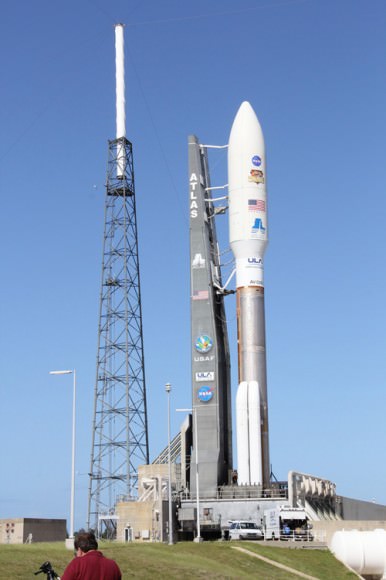
Marking another crucial milestone, the flight team has also powered up and checked the status of all 10 MSL science instruments – and all are nominal.
“The types of testing varied by instrument, and the series as whole takes us past the important milestone of confirming that all the instruments survived launch,” said Betina Pavri of NASA’s Jet Propulsion Laboratory, Pasadena, Calif., science payload test engineer for the mission. “These checkouts provide a valuable calibration and characterization opportunity for the instruments, including camera dark images and a measurement of zero pressure in the vacuum of space for the rover weather station’s pressure sensor.”
Ever since it was the first of MSL’s science instruments to be switched on three months ago, the Radiation Assessment Detector (RAD) has been collecting valuable measurements about the potentially lethal radiation environment in space and acting as a stunt double for determining the potential health effects on future human travelers to Mars.
RAD has been collecting data on the recent wave of extremely powerful solar flares erupting from the sun.
Curiosity has another 244 million kilometers to go over the next 4 months.
All hopes ride on Curiosity as America’s third and last generation of Mars rovers.
Devastating and nonsensical funding cuts to NASA’s Planetary Science budget have forced NASA to cancel participation in the 2018 ExoMars lander mission that had been joint planned with ESA, the European Space Agency. ESA now plans to forge ahead with Russian participation.
Stay tuned
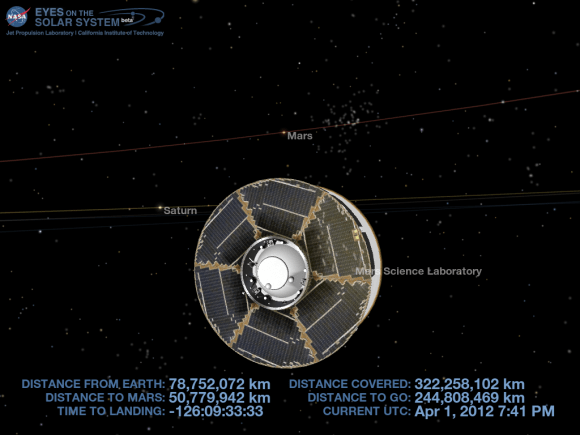
Read Ken’s recent Curiosity feature here:
A Penny for your Curiosity on Mars
NASAs Proposed ‘InSight’ Lander would Peer to the Center of Mars in 2016

[/caption]
A Phoenix-like lander that would mine the deepest hole yet into Mars– to a depth of 5 meters – and unveil the nature of the mysterious deep interior and central core of the Red Planet is under consideration by NASA for a 2016 launch and sports a nifty new name – InSight.
The stationary “InSight” lander would be an international science mission and a near duplicate of NASA’s proven Phoenix spacecraft, Bruce Banerdt told Universe Today. Banerdt is the Principal Investigator of the proposed InSight mission.
“InSight is essentially built from scratch, but nearly build-to-print from the Phoenix design,” Banerdt, of NASA’s Jet Propulsion Laboratory (JPL) in Pasadena , Calif, told me. The team can keep costs down by re-using the blueprints pioneered by Phoenix instead of creating an entirely new spacecraft.
“The robotic arm is similar (but not identical) to the Phoenix arm.”
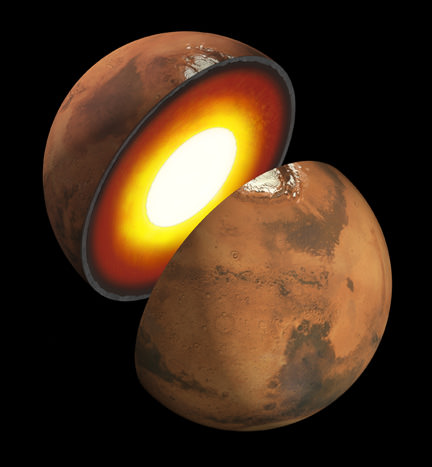
Insight’s goal is to investigate and deduce the nature of the interior of the Red Planet. Credit: JPL/NASA
However, the landing site and science goals for InSight are quite different from Phoenix.
InSight will have an entirely new suite of three science instruments, including two from Europe, designed to peer to the center of Mars and detect the fingerprints of the processes by which the terrestrial planets formed. It will determine if there is any seismic activity, the amount of heat flow from the interior, the size of Mars core and whether the core is liquid or solid.
NASA’s twin GRAIL lunar gravity probes are set to begin their own investigation into the interior and core of Earth’s Moon in early March 2012, and several science team members are common to GRAIL and InSight.
“The seismometer (SEIS, stands for Seismic Experiment for Interior Structure) is from France (built by CNES and IPGP) and the heat flow probe (HP3, stands for Heat flow and Physical Properties Probe) is from Germany (built by DLR),” Banerdt explained.
Phoenix successfully landed in the frigid northern polar regions of Mars in 2008 in search of potential habitats for life and quickly discovered water ice and salty soils that could be favorable for the genesis and support of extraterrestrial life.
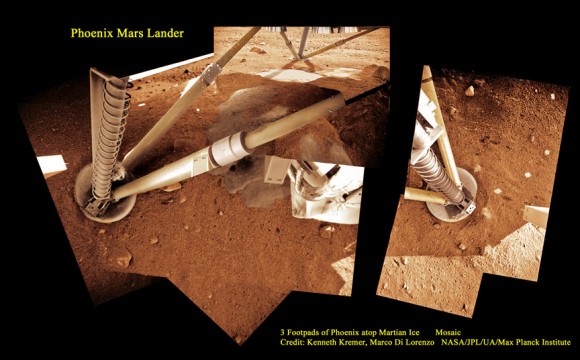
Phoenix thrusters blasted away Martian soil and exposed water ice. Proposed Mars InSight mission will build a new Phoenix-like lander from scratch to peer deep into the Red Planet and investigate the nature and size of the mysterious Martian core. Credit: Kenneth Kremer, Marco Di Lorenzo, Phoenix Mission, NASA/JPL/UA/Max Planck Institute
InSight will intentionally land in a far warmer and sunnier location nearer the moderate climate of the equator to enable a projected lifetime of 2 years (or 1 Mars year) vs. the 5 months survival of Phoenix extremely harsh arctic touchdown zone.
“Our planned landing site is in Elysium Planitia,” Banerdt told me. “It was chosen for optimizing engineering safety margins for landing and power.”
The more equatorial landing site affords far more sun for the life giving solar arrays to power the instruments and electronics.
“We have global objectives and can do our science anywhere on the planet.”
Elysium Planitia is not too far from the landing sites of the Spirit and Curiosity rovers. The Elysium Mons volcano is also in the general area, but it’s a long way from precise site selection.
InSight is a geophysical lander targeted to delve deep beneath the surface into the Martian interior, check its “vital signs”; like “pulse” though seismology, “temperature”, though a heat flow probe, and “reflexes”, through precision tracking.
The purpose is to answer one of science’s most fundamental questions: How were the planets created?
InSight will accomplish much of its science investigations through experiments sitting directly in contact with the Martian surface. The robotic arm will pluck two of the instruments from the lander deck and place them onto Mars.
“The arm will pick the SEIS seismometer and HP3 heat flow probe off the deck and place each on the ground next to the lander. The arm doesn’t have a drill, but the heat flow probe itself will burrow down as deep as 5 meters,” Banerdt elaborated.
The third experiment named RISE (Rotation and Interior Structure Experiment) is to be provided by JPL and will use the spacecraft communication system to provide precise measurements of Mars planetary rotation and elucidate clues to its interior structure and composition.
Right now on Mars, NASA’s Opportunity rover is conducting a Doppler radio tracking experiment similar to what is planned for RISE, but InSight will have a big advantage according to Banerdt.
“The RISE experiment will be very similar to what we are doing right now on Opportunity, but will be able to do much better, said Banerdt. “The differences are that we will get more tracking every week (Opportunity is power-limited during the winter months; that’s why she is currently stationary!) and will make measurements for an entire Mars year – we will likely only get a handful of months from Opportunity.”
Insight will also be equipped with 2 cameras and make some weather measurements.
“We have a camera on the arm and one fixed to the deck, both primarily to support placing the instruments on the surface, although they will be able to scan the landscape around the spacecraft. Both are Black & White,” Banerdt told me.
“We will measure pressure, temperature and wind, mostly to support noise analysis on the seismic data, but will also supply information on the weather.”
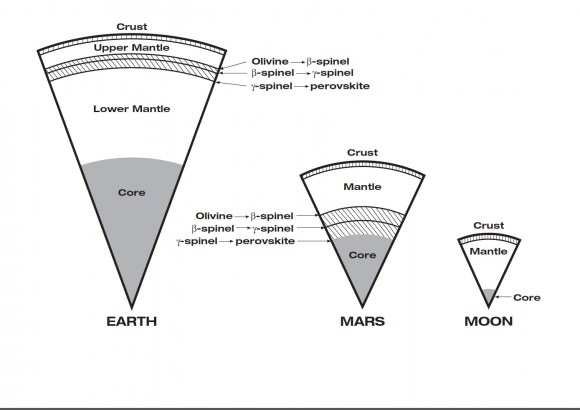
InSight is one of three missions vying to be selected for flight in NASA’s Discovery Program, a series of low cost NASA missions to understand the solar system by exploring planets, moons, and small bodies such as comets and asteroids. All three mission teams are required to submit concept study reports to NASA on March 19.
Banerdt’s team is working hard to finalize the concept study report.
“It describes the mission design as we have refined it over the past 9 months since the NASA Step-1 selection.”
So there is no guarantee that InSight will fly. Because of severe budget cuts to NASA’s Planetary Science Division, NASA had to cancel its scheduled participation in two other Mars missions dubbed ExoMars and jointed planned with ESA, the European Space Agency, for launch in 2016 and 2018.
A Penny for your Curiosity on Mars
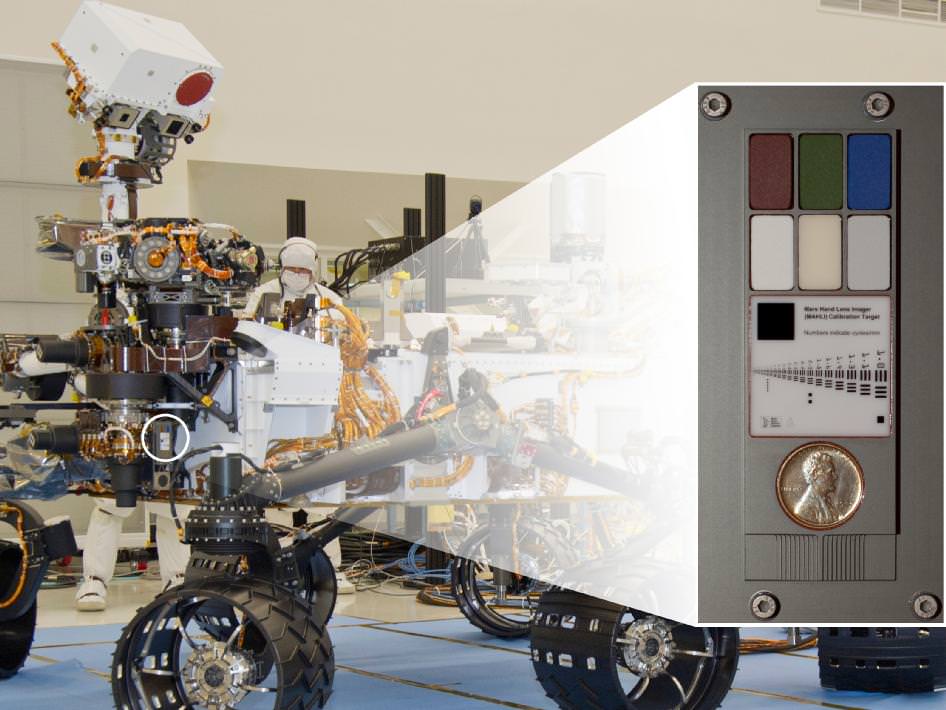
[/caption]
NASA’s huge Curiosity Mars Science Lab (MSL) rover is carrying a vintage Lincoln penny along for the long interplanetary journey to Mars – and it’s not to open the first Martian savings account.
Scientists will use the century old Lincoln penny – minted back in 1909 – as a modern age calibration target for one of Curiosity’s five powerful science cameras attached to the end of the hefty, 7 foot (2.1 meter) long robotic arm.
The car sized rover is on course to touchdown at the foothills of a towering and layered mountain inside Gale Crater in just 161 days on Aug. 6, 2012.
So far Curiosity has traveled 244 million kilometers since blasting off on Nov. 26, 2011 from Florida and has another 322 million kilometers to go to the Red Planet.
The copper penny is bundled to a shoulder joint on the rovers arm along with the other elements of the calibration target, including color chips, a metric standardized bar graphic, and a stair-step pattern for depth calibration.
The whole target is about the size of a smart phone and looks a lot like an eye vision chart in an ophthalmologist’s office. And it serves a similar purpose, which will be to check the performance of Curiosity eyes – specifically the Mars Hand Lens Imager (MAHLI) camera located at the terminus of the robotic arm.
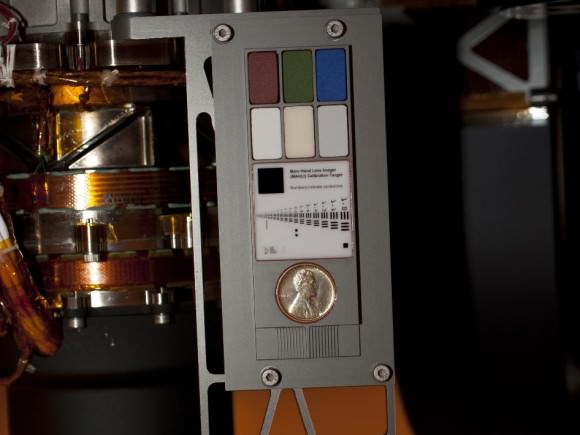
Two instruments at the end of the robotic arm on NASA's Mars rover Curiosity will use calibration targets attached to a shoulder joint of the arm. Credit: NASA/JPL-Caltech
MAHLI will conduct close-up inspections of Martian rocks and soil. It can show tiny details, finer than a human hair.
The term “hand lens” in MAHLI’s name refers to the standard practice by field geologists’ of carrying a hand lens during expeditions for close up, magnified inspection of rocks they find along the way. So it’s also critical to pack various means of calibration so that researchers can interpret their results and put them into proper perspective.
MAHLI can also focus on targets over a wide range of distances near and far, from about a finger’s-width away out to the Red Planets horizon, which in this case means the mountains and rim of the breathtaking Gale Crater landing site.
“When a geologist takes pictures of rock outcrops she is studying, she wants an object of known scale in the photographs,” said MAHLI Principal Investigator Ken Edgett, of Malin Space Science Systems, San Diego, which supplied the camera to NASA.
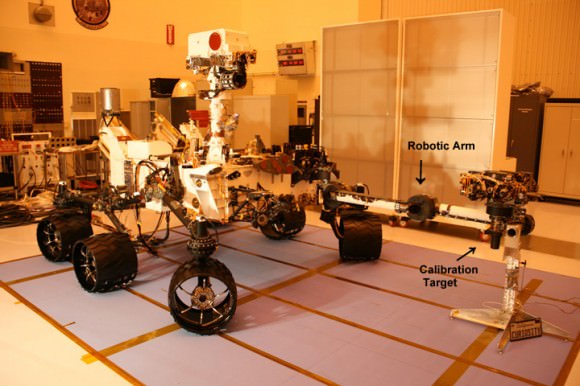
Curiosity with robotic arm extended. Calibration target is located at a shoulder joint on the arm. Photo taken just before encapsulation for 8 month long interplanetary Martian Journey and touchdown inside Gale Crater. Credit: Ken Kremer
The target features a collection of marked black bars in a wide range of labeled sizes to correlate calibration images to each image taken by Curiosity.
“If it is a whole cliff face, she’ll ask a person to stand in the shot. If it is a view from a meter or so away, she might use a rock hammer. If it is a close-up, as the MAHLI can take, she might pull something small out of her pocket. Like a penny.”
Edgett donated the special Lincoln penny with funds from his own pocket. The 1909 “VDB” cent stems from the very first year that Lincoln pennies were minted and also marks the centennial of President Abraham Lincoln’s birth. The VDB initials of the coin’s designer – Victor David Brenner — are on the reverse side. In mint condition the 1909 Lincoln VDB copper penny has a value of about $20.

“The penny is on the MAHLI calibration target as a tip of the hat to geologists’ informal practice of placing a coin or other object of known scale in their photographs. A more formal practice is to use an object with scale marked in millimeters, centimeters or meters,” Edgett said. “Of course, this penny can’t be moved around and placed in MAHLI images; it stays affixed to the rover.”
“Everyone in the United States can recognize the penny and immediately know how big it is, and can compare that with the rover hardware and Mars materials in the same image,” Edgett said.
“The public can watch for changes in the penny over the long term on Mars. Will it change color? Will it corrode? Will it get pitted by windblown sand?”
MAHLI’s calibration target also features a display of six patches of pigmented silicone to assist in interpreting color and brightness in the images. Five of them are leftovers from Spirit and Opportunity. The sixth has a fluorescent pigment that glows red when exposed to ultraviolet light, allows checking of an ultraviolet light source on MAHLI. The fluorescent material was donated to the MAHLI team by Spectra Systems, Inc., Providence, R.I.
Three-dimensional calibration of the MSL images will be done using the penny and a stair-stepped area at the bottom of the target.
“The importance of calibration is to allow data acquired on Mars to be compared reliably to data acquired on Earth,” said Mars Science Laboratory Project Scientist John Grotzinger, of the California Institute of Technology, Pasadena.
Curiosity is a 1 ton (900 kg) behemoth. She measures 3 meters (10 ft) in length and is nearly twice the size and five times as heavy as Spirit and Opportunity, NASA’s prior set of twin Martian robots. The science payload is 15 times heavier than the twin robots.
Curiosity is packed to the gills with 10 state of the art science instruments that are seeking the signs of life in the form of organic molecules – the carbon based building blocks of life as we know it.
NASA could only afford to build one rover this time.
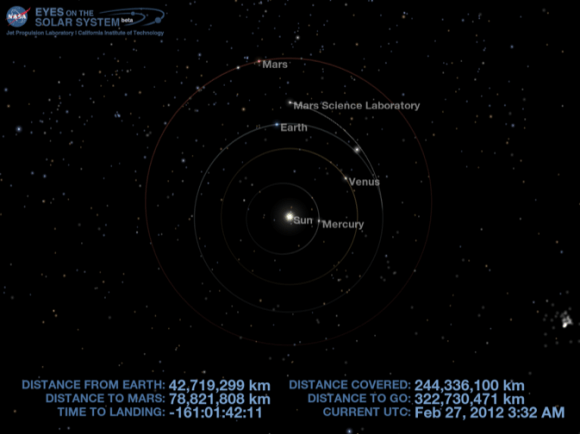
Curiosity will be NASA’s last Mars rover since the 4th generation ExoMars rover due to liftoff in 2018 was just cancelled by the Obama Administration as part of a deep slash to NASA’s Planetary Science budget.
Opportunity Phones Home Dusty Self-Portraits and Ground Breaking Science
[/caption]
Opportunity, the Princess of Martian Robots, phoned home dusty new self portraits – above and below – of her beautiful bod basking in the utterly frigid sunshine during her 5th winter on the Red Planet whilst overlooking a humongous crater offering bountiful science.
NASA’s endearing robot is simultaneously carrying out an ambitious array of ground breaking science experiments this winter – providing insight into the mysterious nature of the Martian core – while sitting stationary until the energy augmenting rays of the springtime Sun shower down on Mars from the heavens above.
Opportunity’s current winter worksite is located at the rim of the vast crater named Endeavour, some 14 miles (22 kilometers) in diameter. The robot will remain parked for the winter on a slope at the north end of the crater rim segment called Cape York with an approximate 15-degree northerly tilt towards the life-giving sun to maximize solar energy production. The park-site is at an outcrop dubbed “Greeley Haven”, named in honor of Ronald Greeley, a beloved and recently deceased science team member.
The power killing dust buildup is readily apparent on the solar arrays and High Gain Antenna pictured in the new panoramic self-portraits of Opportunity’s wing-like deck. The red Martian dust also functions as a rather effective camouflage agent, sometimes blending the rover to near invisibility with the surface.
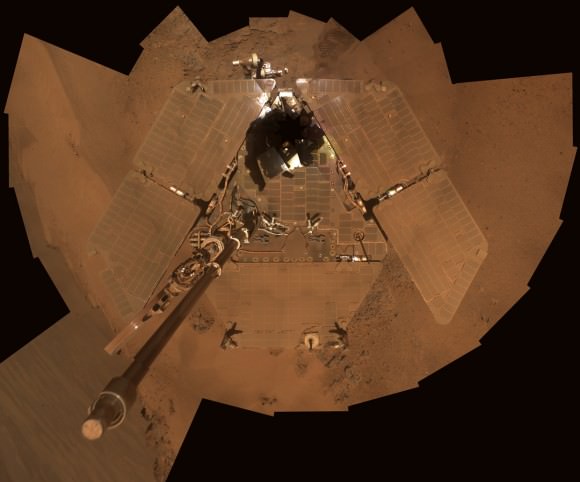
NASA's Mars Exploration Rover Opportunity shows dust accumulation on the rover's solar panels as the mission approached its fifth Martian winter at the rim of Endeavour Crater. Opportunity is located on the north-facing slope of a site called "Greeley Haven." This is a mosaic of images taken by Opportunity's panoramic camera (Pancam) during the 2,811th to 2,814th Martian days, or sols, of the rover's mission (Dec. 21 to Dec. 24, 2011). Credit: NASA/JPL-Caltech/Cornell/Arizona State Univ.
Indeed because Opportunity is covered with a thicker film of dust compared to her prior four Martian winters, the rover team was forced to employ the same “tilting” strategy they successfully used to keep her twin sister Spirit alive during her trio of Antarctic-like winters. This is the first winter that Opportunity did not have sufficient power to continue roving across the surface.
Since Opportunity is located just south of the Martian equator, the daylight hours for solar power generation are growing shorter until the southern Mars winter solstice occurs on March 30, 2012. As of mid- February 2012, the latest measure of solar array energy production was 274 watt-hours, compared to about 900 watt-hours at the start of the mission. See Solar Power energy graph below.
Power generation from the solar arrays has fluctuated up and down throughout Opportunity’s lifetime depending on when the completely unpredictable and fortuitous Martian wind storms chance by and miraculously clean the arrays of the rusty red dust.
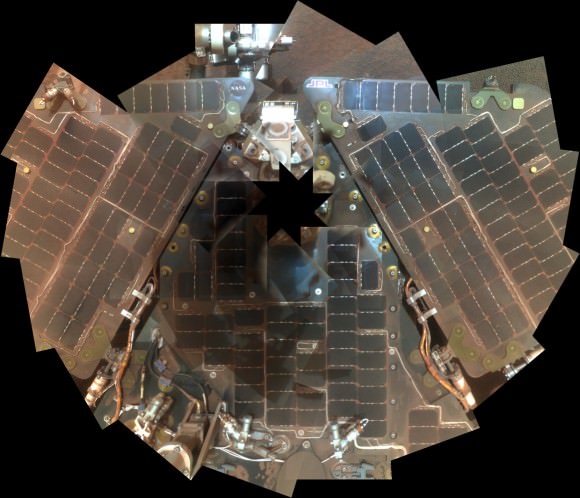
Opportunity used its panoramic camera (Pancam) during the mission's sols 1282 and 1284 (Sept. 2 and Sept. 4, 2007) to take the images combined into this mosaic view of the rover. The downward-looking view omits the mast on which the camera is mounted.The deck panorama is presented in approximate true color, the camera team's best estimate of what the scene would look like if humans were there and able to see it with their own eyes.Credit: NASA/JPL-Caltech/Cornell
The rover science team is ingeniously using the lack of movement to their advantage and Opportunity is still vigorously hard at work doing breakthrough research each and every day.
From her stationary position, Opportunity is conducting her first ever radio science Doppler tracking measurements to support geo-dynamic investigations and to elucidate the unknown structure of the Martian interior and core. The team was eager for the long awaited chance to carry out the radio tracking experiment with the High Gain Antenna (HGA) and determine if Mars core is liquid or solid. Months of data collection are required while the rover stays stationary.
“This winter science campaign will feature two way radio tracking with Earth to determine the Martian spin axis dynamics – thus the interior structure, a long-neglected aspect of Mars,” Ray Arvidson told Universe Today. Arvidson, of Washington University in St. Louis, is the deputy rover Principal Investigator.
Opportunity has nearly finished snapping the 13 filter, 360 degree stereo Greeley” panorama. The rover deployed the robotic arm onto the surface of the “Amboy” outcrop to collect multi-sol integrations with the Mössbauer Spectrometer and the largest ever mosaic campaign using the Microscopic Imager.
“We’ll do good science while we’re at Greeley Haven. But as soon as we catch a wind gust or the seasons change, we’ll be on our way again,” Steve Squyres told Universe Today. Squyres, of Cornell University is the rover Science Principal Investigator
“The Martian southern winter solstice occurs at the end of March. A few months after that date we will drive her off the outcrop and further explore Cape York,” Arvidson told me
The team will drive Opportunity in search of further evidence of the gypsum mineral veins like “Homestake” – indicative of ancient water flow – previously discovered at Cape York. Thereafter they’ll rove further south to investigate deposits of phyllosilicates, the clay minerals which stem from an earlier epoch when liquid water flowed on Mars eons ago and perhaps may have been more favorable to sustaining life.

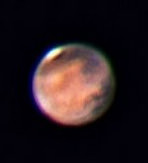
Opportunity is now well into her 9th year exploring hitherto unknown terrain on Mars, far exceeding anyone’s expectation. She landed inside a tiny crater on Jan. 24. 2004 for what was expected to be a mission of merely 90 Martian days, or Sols.
Today is Martian Sol 2873, that’s 32 times beyond the rover designers “warranty” for NASA’s Opportunity rover.
Altogether, Opportunity has journeyed more than 21 miles (34 kilometers) across the Red Planet’s surface, marking the first overland expedition on another Planet. See our route map below.
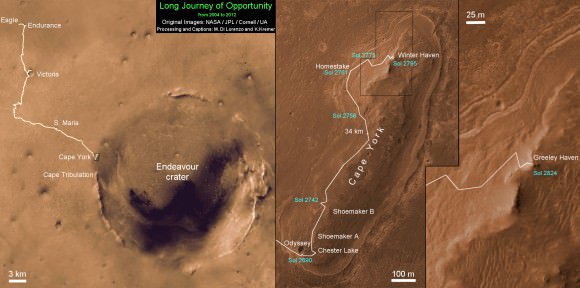
Traverse map shows the 8 Year Journey of Opportunity from Eagle Crater landing site on Sol 1- Jan. 24, 2004 - to 5th Winter Haven worksite at Greeley Haven at Endeavour Crater rim in January 2012. Opportunity embarked on a crater tour and discovered bountiful evidence for the flow of liquid water on Mars billions of years ago. Endeavour Crater is 14 miles 22 kilometers) in diameter. Opportunity has driven more than 21 miles (34 km). Credit: NASA/JPL/Cornell/UA/Marco Di Lorenzo/Kenneth Kremer
Meanwhile, NASA’s Curiosity Mars Science Laboratory rover is rocketing through space and on course for a pinpoint touchdown inside the layered terrain of Gale Crater on August 6, 2012. Curiosity is now America’s last planned Mars rover following the cancellation of the joint NASA/ESA ExoMars rover mission in the Obama Administrations newly announced Fiscal 2013 NASA budget.
Experts React to Obama Slash to NASA’s Mars and Planetary Science Exploration
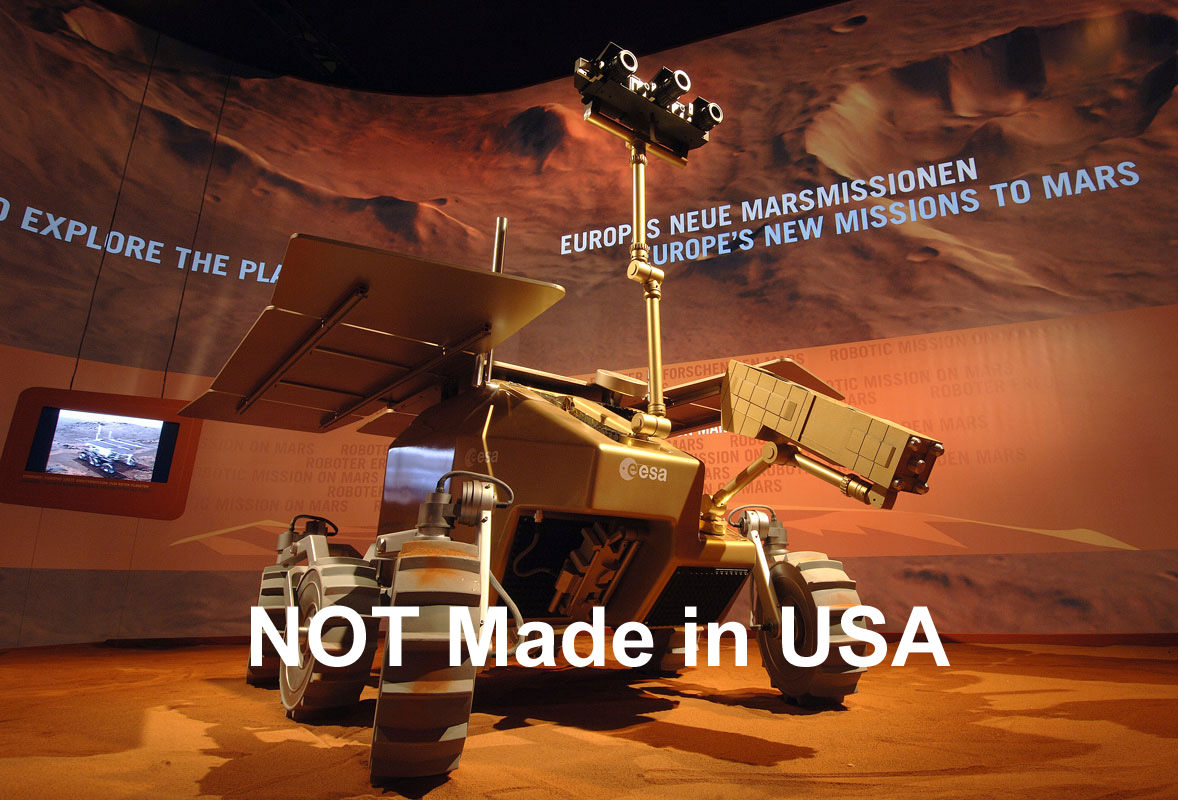
[/caption]
Earth’s next Mars Rover – NOT Made in USA
Just days after President Obama met with brilliant High School students at the 2012 White House Science Fair to celebrate their winning achievements and encourage America’s Youth to study science and take up careers in the Science, Technology, Engineering and Math (STEM) technical fields, the Obama Administration has decided on deep budgets cuts slashing away the very NASA science programs that would inspire those same students to shoot for the Stars and Beyond and answer the question – Are We Alone ?
Last year, the Obama Administration killed Project Constellation, NASA’s Human Spaceflight program to return American astronauts to the Moon. This year, the President has killed NASA’s ExoMars Robotic Spaceflight program aimed at dispatching two ambitious missions to Mars in 2016 and 2018 to search for signs of life.
Both ExoMars probes involved a joint new collaboration with the European Space Agency (ESA) carefully crafted to share costs in hard times and get the most bang for the buck – outlined in my earlier Universe Today story, here.
Expert Scientists and Policy makers have been voicing their opinions.
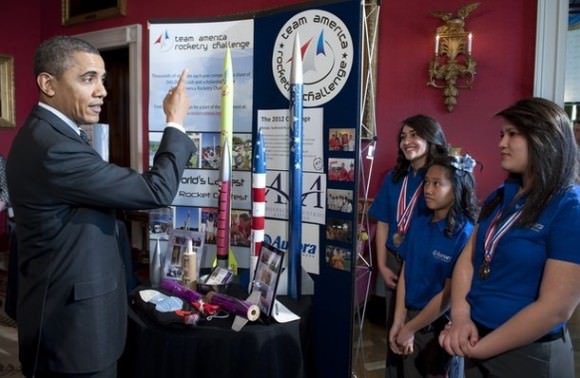
President Barack Obama hosted the winning science fair students from a range of nationwide competitions at the 2nd White House Science Fair on February 7, 2012. The ExoMars missions were eliminated from the NASA budget announced on Feb. 13, 2012.
All of NASA’s “Flagship” Planetary Science missions have now been cancelled in the 2013 Fiscal Year Budget proposed on Feb. 13, and others missions have also been curtailed due to the severe economy.
“There is no room in the current budget proposal from the President for new Flagship missions anywhere,” said John Grunsfeld, NASA’s Associate Administrator for Science at a NASA budget briefing for the media on Feb. 13.
ESA is now looking to partner with Russia as all American participation in ExoMars is erased due to NASA’ s forced pull out.
On Feb. 13, NASA’s Fiscal 2013 Budget was announced and the Obama Administration carved away nearly half the Mars mission budget. Altogether, funding for NASA’s Mars and Planetary missions in the Fiscal 2013 budget would be sliced by $300 million – from $1.5 Billion this year to $1.2 Billion in 2013. NASA was forced to gut the Mars program to pay for the cost overruns of the James Webb Space Telescope.
Mars rover scientist Prof. Jim Bell of Arizona State University and President of The Planetary Society (TPS) told Universe Today that “no one expects increases”, but cuts of this magnitude are “cause for concern”.
NASA’s robotic missions to Mars and other solar system bodies have been highly successful, resulted in fundamental scientific breakthroughs and are wildly popular with students and the general public.
“With these large proposed cuts to the NASA Mars exploration program, there will be a lot of cause for concern,” said Bell.
“The Mars program has been one of NASA’s crown jewels over the past 15 years, both in terms of science return on investment, and in terms of public excitement and engagement in NASA’s mission. It would also represent an unfortunate retreat from the kind of international collaboration in space exploration that organizations like The Planetary Society so strongly support.”
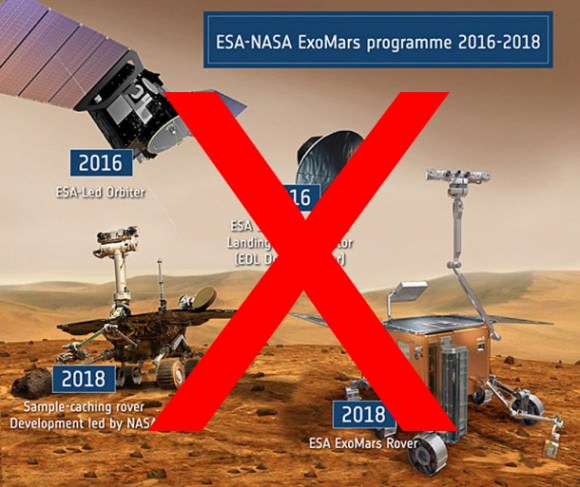
Bell and other scientists feel that any cuts should be balanced among NASA programs, not aimed only at one specific area.
“Certainly no one expects increasing budgets in these austere times, and it is not useful or appropriate to get into a battle of “my science is better than your science” among the different NASA Divisions and Programs.” Bell told me.
“However, it would be unfortunate if the burden of funding cuts were to befall one of NASA’s most successful and popular programs in a disproportionate way compared to other programs. As Ben Franklin said, “We should all hang together, or surely we will all hang separately.”
Bell added that science minded organizations should work with Congress to influence the debate over the coming months.
“Of course, this would only be an initial proposal for the FY13 and beyond budget. Over the winter, spring, and summer many professional and public organizations, like TPS, will be working with Congress to advocate a balanced program of solar system exploration that focuses on the most important science goals as identified in the recent NRC Planetary Decadal Survey, as well as the most exciting and publicly compelling missions that are supported by the public–who ultimately are the ones paying for these missions.”
“Let’s hope that we can all find a productive and pragmatic way to continue to explore Mars, the outer solar system, and our Universe beyond,” Bell concluded.
“The impact of the cuts … will be to immediately terminate the Mars deal with the Europeans,” said Scott Hubbard, of Stanford University and a former NASA planetary scientist who revived the agency’s Mars exploration program after failures in 1999, to the Washington Post. “It’s a scientific tragedy and a national embarrassment.”
“I encourage whoever made this decision to ask around; everyone on Earth wants to know if there is life on other worlds,” Bill Nye, CEO of The Planetary Society, said in a statement. “When you cut NASA’s budget in this way, you’re losing sight of why we explore space in the first place.”
“There is no other country or agency that can do what NASA does—fly extraordinary flagship missions in deep space and land spacecraft on Mars.” Bill Nye said. “If this budget is allowed to stand, the United States will walk away from decades of greatness in space science and exploration. But it will lose more than that. The U.S. will lose expertise, capability, and talent. The nation will lose the ability to compete in one of the few areas in which it is still the undisputed number one.”
Ed Weiler is NASA’s recently retired science mission chief (now replaced by Grunsfeld) and negotiated the ExoMars program with ESA. Weiler actually quit NASA specifically in opposition to the Mars Program cuts ordered by the Office of Management and Budget (OMB) and had these comments for CBS News;
“To me, it’s bizarro world,” Weiler said an interview with CBS News. “Why would you do this? The President of the United States, President Obama, declared Mars to be the ultimate destination for human exploration. Obviously, before you send humans to the vicinity of Mars or even to land on Mars, you want to know as much about the planet as you possibly can. … You need a sample return mission. The president also established a space policy a few years ago which had the concept of encouraging all agencies to have more and more foreign collaboration, to share the costs and get more for the same bucks.”
“Two years ago, because of budget cuts in the Mars program, I had to appeal to Europe to merge our programs. … That process took two long years of very delicate negotiations. We thought we were following the president’s space policy exactly. Congressional reaction was very positive about our activities. You put those factors in place and you have to ask, why single out Mars? I don’t have an answer.”
Space Analysts and Political leaders also weighed in:
“The president’s budget is just a proposal,” said Howard McCurdy, a space-policy specialist at American University in Washington to the Christian Science Monitor.
The cuts “reflect the new reality” in which the economy, budget deficits, and the federal debt have elbowed their way to the top of Washington’s agenda, McCurdy adds.
“You don’t cut spending for critical scientific research endeavors that have immeasurable benefit to the nation and inspire the human spirit of exploration we all have,” said Rep. John Culberson (R-Tex.). Texas is home to NASA’s Johnson Space Center.
Rep. Adam Schiff (D-CA), who represents the district that’s home to the Jet Propulsion Laboratory (JPL), released this statement following his meeting with NASA Administrator Charles Bolden to discuss the agency’s 2013 budget proposal:
“Today I met with NASA Administrator Charles Bolden to express my dismay over widespread reports that NASA’s latest budget proposes to dramatically reduce the planetary science program, and with it, ground breaking missions to Mars and outer planetary bodies like Jupiter’s icy moon Europa, and to inform him of my vehement opposition to such a move.”
“America’s unique expertise in designing and flying deep-space missions is a priceless national asset and the Mars program, one of our nation’s scientific crown jewels, has been a spectacular success that has pushed the boundaries of human understanding and technological innovation, while also boosting American prestige worldwide and driving our children to pursue science and engineering degrees in college.
“As I told the Administrator during our meeting, I oppose these ill-considered cuts and I will do everything in my power to restore the Mars budget and to ensure American leadership in space exploration.”
In an interview with the San Gabriel Valley Tribune, Schiff said, “What they’re proposing will be absolutely devastating to planetary science and the Mars program. I’m going to be fighting them tooth and nail. Unfortunately if this is the direction the administration is heading, it will definitely hurt JPL – that’s why I’m so committed to reversing this.”
NASA still hopes for some type of scaled back Mars missions in the 2016 to 2020 timeframe which will be outlined in an upcoming article.
In the meantime, the entire future of America’s Search for Life on the Red Planet now hinges on NASA’s Curiosity Mars Science Laboratory rover speeding thru interplanetary space and a pinpoint touchdown inside the layered terrain of Gale Crater on August 6, 2012.
Curiosity will be NASA’s third and last generation of US Mars rovers – 4th Generation Axed !
NASA’s Opportunity Rover is now Earth’s only surviving robot on Mars

